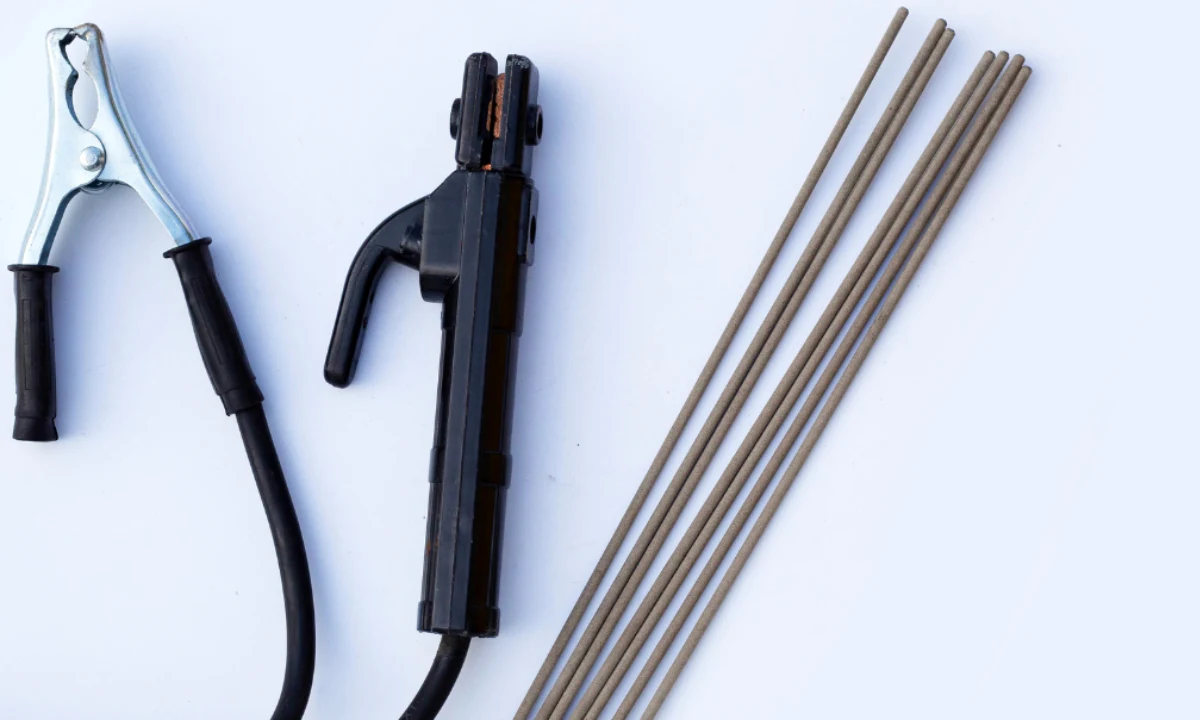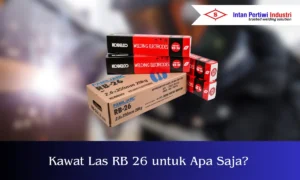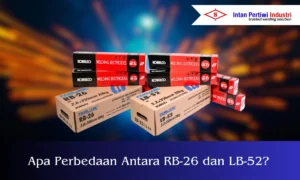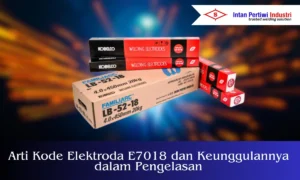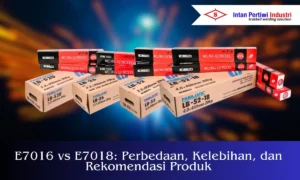Welding electrode for galvanized hollow steel often determines whether your joints are neat or leaky and rust quickly. Choose electrode that's safe for thin plates and a low current setting, then clean the weld area to prevent contamination.
Set the tack-then-stitch technique and allow for cooling breaks to prevent heat buildup. With the right combination of electrode selection, precise parameters, and surface preparation, the weld will look clean and maintain corrosion protection.
Table of Contents
ToggleUnderstanding Galvanized Hollows and the Impact of Heat
The zinc coating on galvanized hollow acts as an anodic sacrificial agent, protecting the base steel from rust. When exposed to welding heat, the zinc can evaporate, producing fumes that can potentially irritate the respiratory tract.
The missing layer in the weld zone also reduces corrosion resistance if not restored. Furthermore, thin walls make the metal susceptible to deformation due to uneven expansion.
Heat input control is key. The thinner the material, the smaller the electrode diameter or welding electrode required, and the lower the current used. The goal is simple.
The arc remains steady, the weld pool is controlled, and heat does not build up.
Process Options and When to Use
Choosing the right process helps balance ease of work, speed, and quality of results.
SMAW Stick
Suitable for workshops and the field because the equipment is simple and easy to carry. Electrode availability is high and the cost is relatively affordable. For thin hollows, E6013 is the mainstay because the arc is soft and the slag is easy to remove.MIG Solid ER70S 6
Choose when productivity and bead appearance are a priority. In short-circuit mode, parameters can be set low, making it friendly for thin plates. The right combination of shielding gases helps with a quieter pool and lower spatter.MIG Brazing CuSi 3
Recommended for panels or parts that are very sensitive to heat. Lower working temperature allows for better zinc coating preservation. The resulting joint is smooth and distortion is reduced, making it very useful for precision work or prominent finishing.
Recommended Diameter and Flow Settings
The goal is to ignite the arc consistently while suppressing the heat input. The following parameters are a safe starting point and need to be adjusted in the field depending on the material thickness, position, and machine used.
SMAW E6013 and E6019
Diameter 2.0 / 2.6 / 3.2 mm. Start with the lowest possible current that maintains a stable arc. Adjust to a higher travel speed to suppress heat buildup.MIG ER70S 6
Diameter 0.8–1.0 mm. Voltage 16–18 V in short circuit mode. Electrode speed 3–5 m/min. Keep stick-out short for optimal heat control.MIG CuSi 3
Voltage 14–17 V with low to medium electrode feed. Focus on minimal heat input to maintain a more intact zinc layer.
Summary table of plate thickness, diameter, and initial settings
| Hollow plate thickness | Process | Wire or electrode | Recommended diameter | Safe initial settings |
|---|---|---|---|---|
| 1,2–1,6 mm | SMAW | E6013 | 2,0–2,6 mm | Low current according to diameter, fast movement, short arc length |
| 2,0 mm | SMAW | E6013 atau E6019 | 2,6 mm | Low–medium current, stitch and skip |
| 1,2–1,6 mm | MIG | ER70S-6 | 0,8 mm | 16–18 V, 3–5 m/min, short stick-out |
| 2,0 mm | MIG | ER70S-6 | 1,0 mm | The tension and speed of the wire are adjusted slowly until the pool is stable. |
| The panel is very sensitive | MIG Brazing | CuSi-3 | 0,8–1,0 mm | 14–17 V, low–medium wire feed, focus on minimal heat |
Note: The values in the table are a common starting point. Always perform a sample test on a scrap piece of material to validate bead appearance and penetration before production.
Surface Preparation and Safety
The quality of the joint depends heavily on the cleanliness of the weld area. Follow these steps to ensure the pool is free of contamination and health risks are controlled.
Clean only the weld area until the metal is clean. Remove paint, oil, and dust. Lightly grind or scrape over a width sufficient to form a good fusion.
Ensure adequate ventilation. Zinc fumes can irritate the respiratory tract. Use an appropriate respirator if natural ventilation is insufficient.
Use personal protective equipment in the form of gloves, glasses, face shield, work clothes that cover the skin, and hearing protection if necessary.
After welding is complete and the metal has cooled, apply cold galvanizing spray paint to the areas where the zinc layer has been lost to restore corrosion resistance to its original condition.
Anti-hole Welding Technique
A heat management strategy is more than simply pursuing low current. Apply the following techniques to keep thin walls safe and the results clean.
Tack then stitch and skip
Tack as a temporary binding to keep the gap consistent. Continue short stitches. Take a break. Move to another section so the heat is evenly distributed.Short arc length for SMAW
An arc that is too long increases heat and spatter. Keep the arc length short to keep the pool small and controlled.Small, steady movements
Avoid large swings. Small movements keep the pool from widening and prevent the edges from melting excessively.Control the electrode speed and tension on the MIG
Increase the electrode speed gradually until the filling feels stable without causing the pool to swell. If spattering increases, evaluate the tension and stick out.Cooling between passes
Allow a short pause to allow heat to dissipate. This effectively suppresses distortion and improves the appearance of the bead on thin plates.
Short Case Study
Canopy or railing 1.2–1.6 mm
E6013 diameter 2.0–2.6 mm at low current with stitch technique. Maintain the movement speed to prevent the pool from piling up.Small spot repair of cracked joints
RB-26 diameter 2.6 mm with gradual tack. Perform a short test on a similar piece to ensure fusion and appearance before touching the main component.Panels are highly sensitive to appearance and distortion
MIG brazing CuSi-3 to maintain a more intact zinc layer. Low voltage and electrode feed are adjusted until the pool is smooth. The final result generally requires a light finish.
Cost and Quality Comparison
SMAW offers high flexibility and lower tool investment. Electrodes are readily available, making it suitable for small workshops and field work. Set-up times are relatively quick, but deposition rates can lag behind MIG on high-volume workloads.
Solid MIG offers superior productivity, a neat bead appearance, and low spatter. The downside is the need for shielding gas and more diligent equipment maintenance.
For high-volume routine jobs, the combination of MIG and disciplined cleaning procedures often results in a competitive total cost.
MIG brazing CuSi 3 offers a solution when visual quality and minimal distortion are the primary objectives. The cost of the electrode may be higher, but the savings in finishing rework time often offset the difference.
The best choice depends on volume, target appearance, gas availability, and operator skill. For a shop with a varied order mix, having two options—SMAW E6013 for quick repairs and MIG for production—will provide optimal flexibility.
Welding electrode Recommendations for Galvanized Hollow Iron
Here are some recommendations for the best welding electrode for galvanized hollow iron that you can use, namely:
1. KOBELCO RB-26 — AWS E6013
E6013 rutile electrode is versatile for carbon steel, smooth arc with easy ignition and restrike, easy slag removal, suitable for thin to medium plate work in workshop and field (AC/DC).
For galvanized hollow, clean the weld zone first so that the fusion is clean and has minimal porosity.
Check the product: KOBE RB 26 Welding Electrode
2. KOBELCO MS-77 — AWS E6013
The E6013 variant is intended for quieter pool control and a neat bead appearance on thin plates; easy to start, stable at low currents, and easy slag removal (AC/DC).
Ideal for galvanized hollow joints after local area prep.
Check the product: KOBE Welding Electrode MS 77
3. KOBELCO B-17 — AWS E6019
Rutile electrode E6019 with iron powder content for higher deposit rates, comfortable in flat and fillet/horizontal positions, smooth cutting, and easy slag removal (AC/DC).
Can be an alternative to plate/hollow; still clean the zinc layer on the weld line before welding.
Check the product: KOBE Welding Electrode B 17
Important practice notes
For thin galvanized hollow, prioritize a diameter of 2.0–2.6 mm if available or 2.6 mm. Use low current and apply the tack → stitch → skip technique to prevent heat buildup in one spot. This reduces the risk of holes and distortion, while the appearance of the bead is cleaner.
Conclusion
For welding electrode for galvanized hollow iron, the main key is to choose a electrode that is friendly to thin plates, set a small diameter with low current, and keep the welding zone clean.
SMAW E6013 such as RB 26 and MS 77 provide a balance of ease and neat results, while B 17 E6019 can be an alternative in suitable positions.
If you're after speed and a smooth bead appearance, MIG ER70S 6 is worth considering, while MIG brazing CuSi 3 helps maintain the zinc coating on highly heat-sensitive panels.
Place your order today. Specify your material thickness and number of units. Our team will customize the diameter, flow settings, and safest product to your specifications.
FAQs
Is E6013 safe for thin galvanized hollow?
It's safe to clean the weld area, choose a small diameter, keep the current as low as possible while remaining stable, and use the stitch technique. Cooling between passes is essential to minimize distortion.
When to choose the ER70S 6 over the E6013?
Choose the ER70S 6 when you're looking for productivity and a smoother bead finish. The short-circuit mode with low voltage and short stickout is ideal for thin plates.
Why does some zinc need to be cleaned before welding?
Any zinc coating remaining in the fusion zone could evaporate and contaminate the pool. Cleaning only along the joint line helps improve fusion quality while minimizing the loss of protection outside the weld zone.
How to prevent porosity and holes in thin plates?
Ensure cleanliness, set small diameters with low currents, use tack then stitch techniques, keep arc lengths short, and test parameters on remaining material before production.
How to restore zinc protection after welding?
Apply cold galvanizing spray paint to areas where the coating has been lost. Perform a light cleaning and then apply according to the instructions to restore optimal corrosion resistance.
What is the recommended welding electrode for galvanized hollow iron?
For galvanized hollow steel, prioritize SMAW E6013 such as KOBELCO RB-26 or MS-77. Use a 2.0–2.6 mm diameter, low current, tack-stitch technique, and clean the zinc in the weld area. Alternative: B-17 (E6019). For MIG: ER70S-6; on very thin panels, consider CuSi-3 brazing. Use short stick-outs and good ventilation.


